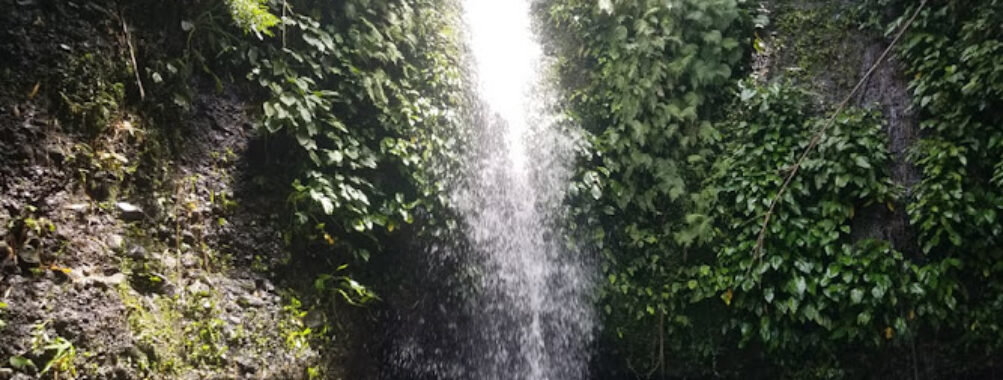
Martin Falls
Table of Contents Martin Falls in Olongapo City, Philippines is one of those places that immediately makes people forget the noise of the city. Tucked within the rugged hills of Zambales, this underrated waterfalls site offers a splash of serenity and a dash of adventure in equal measure. Many locals treat it as a weekend escape—a haven for short hikes, cooling swims, and quiet picnics by the river. The sound of rushing water blends with the chirping of birds, and the air feels noticeably fresher here. It’s not exactly a huge tourist machine, which is honestly its charm—Martin Falls is still quite raw, relatively untouched, and beautiful in its simplicity. What makes this waterfall special, at least in my opinion, is its unassuming nature. It’s not the highest or most powerful fall in the Philippines, but it’s got personality. The water tumbles over natural rock terraces, creating shallow pools where both adults and kids can wade safely. I remember the first time I went—it was after a humid afternoon in Olongapo, and the dip in that cool, clear pool felt like the best reward imaginable after a short yet sweaty trek. Families often bring small grills and floaties, turning this natural wonder into a sort of improvised riverside playground. Unlike many popular falls around Luzon that require long treks or guided expeditions, Martin Falls is surprisingly accessible. It lies not too far from the central parts of Olongapo City, which makes it perfect for travelers with limited time. The area gives off a local, community-run feel rather than a commercialized tourist site. Expect to see friendly locals offering to guide you, and you might even catch groups of teenagers diving off the rocks with fearless joy—a local tradition of sorts. It’s good for kids too, provided you keep an eye on them near the slippery parts. There’s something grounding about places like this. People talk a lot about “finding yourself” in travel, but honestly, sometimes all you need is a quiet day by a waterfall to feel more human. Martin Falls delivers that effortlessly. Whether it’s the clean freshwater, the soft sunlight glinting off wet boulders, or just the easy laughter in the air, this spot captures that simple joy we often forget to look for. Timing really shapes the experience here. The dry season—from December through May—is generally the safest and most comfortable time to visit Martin Falls. During these months, the water flow is consistent but gentle, and the trail remains firm instead of muddy. In the rainy season, which hits around June to October, the area transforms into something wild and cinematic—the river swells, the falls roar louder, and the surrounding forest practically glows green. But it also becomes slippery, so if you’re not used to hiking in wet conditions, it might be a bit much. Personally, I love visiting around late February to early March. The water is crisp, the weather is cooperative, and you can really soak up the beauty without fighting the summer heat. Arriving early in the morning pays off big time—the sun filters through the trees, creating that magical misty effect that makes the area look straight out of a painting. And if you’re into photography or just want that perfect quiet moment before others arrive, mornings are your ticket. Weekdays tend to be more peaceful. Weekends, especially holidays, can bring in families and groups from nearby Subic Bay and Zambales towns. If your goal is relaxation rather than socializing, a midweek excursion will be your best call. Reaching Martin Falls from central Olongapo City, Philippines, is relatively straightforward but does require a bit of local navigation. Most travelers start from the city proper and head toward the more rural outskirts where the falls are located. For visitors without private transportation, tricycles or jeepneys can take you halfway, though the exact drop-off point depends on who’s driving and how well they know the spot. The final portion is usually a short trek—roughly 15 to 20 minutes—through a trail that winds along small streams and shaded paths. It’s not rigorous, but I’d still recommend comfortable footwear and a small backpack for your water and belongings. Some parts require crossing low sections of the river or walking over slick rocks. So, while it’s manageable for kids and beginners, it still gives you that hint of adventure that makes the arrival feel earned. If you’re coming from Manila, the drive to Olongapo City typically takes about 3 to 4 hours depending on traffic. Once you reach the city, local guides or even roadside stores can point you toward the direction of the falls. The people here are genuinely helpful, and most know the area well enough to set you on the right path. It’s one of those underrated perks of traveling in the Philippines—the local hospitality doesn’t need any marketing slogan, it just exists and thrives. There are a few practical things to keep in mind if you’re planning a trip to Martin Falls, and these come from experience (and a couple of minor mistakes I made the first time around). Martin Falls is one of those rare places that’s both accessible and peaceful, a spot where you can unplug and let the noise of rushing water quiet your thoughts. Whether you come as a solo traveler in search of calm or as a family wanting a refreshing day outdoors, the experience lingers long after you’ve left. Maybe it’s the easy laughter of locals, maybe it’s the natural rhythm of the falls—but once you visit, it sort of sticks with you. And that’s the true charm of Martin Falls Olongapo City Philippines—it doesn’t try hard to impress; it just gently reminds you what genuine beauty feels like.Description
Key Features
Best Time to Visit
How to Get There
Tips for Visiting
Location
Places to Stay Near Martin Falls
Find and Book a Tour
Explore More Travel Guides
No reviews found! Be the first to review!